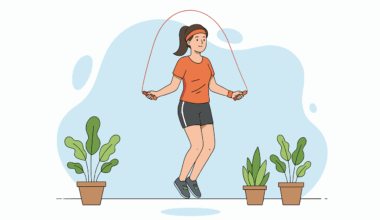Breathing Techniques to Combat Headache and Tension Pain
Headaches and tension-related pains can be debilitating, impacting daily life significantly. However, breath control can be a powerful ally in managing these discomforts. By learning specific breathing techniques, individuals can help relax their bodies and reduce the severity of their pain. Deep breathing exercises can improve oxygen flow, which is crucial for alleviating tension in muscles and promoting relaxation. Progressive muscle relaxation is also beneficial, where one tenses and then relaxes different muscle groups, facilitating a greater awareness of physical sensations. This practice often reduces the tightness in areas contributing to headaches. Furthermore, deep breathing can also decrease anxiety levels and center the mind, which may contribute to pain relief. Techniques like diaphragmatic breathing engage the diaphragm fully, ensuring deep breaths rather than shallow ones. As such, individuals learn to utilize their breath as a natural pain-reliever instead of relying solely on medications, which may have side effects. Overall, incorporating these breathing methods into your lifestyle can drastically change how headaches and tension pains are experienced and managed.
Understanding the Science of Breath
Breathing techniques for pain management are rooted in both psychology and physiology. Stress and muscle tension often exacerbate headaches, making understanding breath vital. When a person feels stress, breathing becomes shallow, contributing to muscle tightness and discomfort. By implementing structured breathing techniques, individuals can counteract stress responses within the body. The key principle behind these techniques lies in stimulating the parasympathetic nervous system, which promotes relaxation. This part of the nervous system is pivotal in calming the body, helping to lower heart rate and blood pressure. Moreover, deep and conscious breathing can lead to improved emotional regulation, thus affecting pain perception. Research indicates that focusing on breath can significantly lower cortisol levels, the hormone associated with stress. Consequently, lower cortisol levels can lead to decreased pain sensitivity, notably in tension headaches. Furthermore, practicing these techniques regularly creates a sense of awareness around pain triggers, fostering a proactive approach to headache management. Pain management becomes holistic and integrative, using one’s breath as a tool rather than merely masking symptoms with medications.
Calm and focused breathing techniques can be easily integrated into daily routines. Establishing a time each day dedicated to breathing exercises significantly benefits pain management practices. Each session can begin with finding a quiet space, allowing oneself to focus solely on the breath. Sitting comfortably, one should close the eyes and take a few moments to settle into the space. Start by taking a deep breath in through the nose, allowing the stomach to expand fully before exhaling through the mouth. This simple practice can be performed for a few minutes at a time, gradually increasing the duration as comfort allows. Progressive muscle relaxation, mentioned earlier, can combine well with breath control for even greater benefits. Individuals may notice increased relaxation in areas of tension, which can promote a more balanced mental state. Engaging in this process can also help with mindfulness, allowing participants to observe their thoughts without judgment. Emphasizing consistent practice is important as individuals will find increased effectiveness. The ultimate goal remains to cultivate a deeper connection with oneself, resulting in improved overall well-being.
Specific Breathing Techniques to Try
Several breathing techniques specifically target headache and tension relief. One popular method is the 4-7-8 breathing technique. To practice, inhale through the nose for a count of four, hold for seven, and exhale through the mouth for a count of eight. This technique serves to activate the parasympathetic nervous system and can be practiced multiple times a day. Another effective method is box breathing, often used to enhance focus and mitigate stress. Inhale for a count of four, hold for four, exhale for four, and then hold again for four counts. Repeating this pattern enhances relaxation and reduces tightness in the neck and head. Additionally, the pursed lip breathing technique can promote relaxation. Inhale deeply through the nose, then exhale slowly through pursed lips. This method helps slow down breaths, promoting a calm state. Research shows that these techniques can also enhance feelings of control over pain sensations. Each method requires practice but offers a valuable addition to one’s wellness routine for effectively combating tension headaches.
Incorporating these breathing techniques into daily life requires commitment and understanding. Success hinges on consistently practicing the techniques until they feel natural and habitual. It’s also beneficial to pair breathing exercises with other wellness practices like yoga, meditation, or tai chi. These complementary activities also emphasize mindful breathing and can enhance the overall effectiveness of pain management strategies. Creating reminders, whether through phone alarms or sticky notes, can help individuals prioritize these practices throughout the day. Additionally, joining a group or class focused on these techniques may provide motivation and peer support. Engaging with others who share similar goals often creates accountability and encourages perseverance. Undertaking a journey toward managing pain can seem daunting but incorporating these breathing strategies gradually can empower individuals. Over time, one can develop an intuitive understanding of personal needs, identifying specific techniques that work best for them. Exploring different breathing methods not only aids in managing headaches effectively but can also transition one’s relationship with stress and discomfort altogether.
Seeking Professional Guidance
While self-practice of breathing techniques is beneficial, seeking professional guidance may also be necessary. Therapists and trained practitioners can provide tailored approaches based on individual needs. Biofeedback, for instance, combines technology and education to help individuals gain control over bodily functions like muscle tension and heart rate. Learning alongside a professional creates a supportive environment for deeper exploration of pain triggers. A significant aspect of pain management through breath is understanding personal responses and reactions to tension. Additionally, some individuals may find group classes beneficial for motivation and learning new techniques. Specialized classes often lead participants through various breathing strategies and provide immediate feedback. Whether through one-on-one sessions or group settings, professional support can enhance the effectiveness of personal practices. It’s also important to evaluate progress periodically, aiding in identifying which techniques yield the most positive results. Remaining flexible and open to adjustments is key, as individual needs can evolve over time. Thus, combining self-practice and expert guidance builds a well-rounded approach to managing tension headaches effectively.
Ultimately, managing headaches and tension pain through breathing techniques can improve overall life quality. Individuals can gain confidence in their ability to handle discomfort proactively. These techniques empower individuals by teaching them relaxation and focus methods to apply in any situation. Over time, these methods help lessen reliance on medications, which can often lead to unwanted side effects and dependency. Moreover, the cultivation of mindfulness and self-awareness fosters a healthier mindset and contributes to long-term well-being. These practices can enhance other aspects of life, improving mood, and productivity. As individuals learn to observe tension and discomfort gently, they shift their perspective and approach to pain management. Success in combating headaches and tension pain involves a combination of skill, patience, and dedication to consistent practice. Each individual’s journey is unique, emphasizing the importance of adapting methods to personal preferences. With regular use of these breathing techniques, individuals may find themselves experiencing fewer headaches and increased overall relaxation. As such, these methods are invaluable tools to incorporate into one’s repertoire for health and wellness.

Effective breathing techniques make managing headache and tension pain more achievable and accessible as a holistic approach to pain relief. The mind-body connection showcased through breath work illustrates the profound effects breathing can have on overall health and relaxation. Individuals can experience newfound freedom through the knowledge of utilizing their breath to foster a calmer state of being. This approach connects the physical experience of pain with emotional awareness, offering a dimension to healing often overlooked. Implementing these practices reinforces resilience, empowering one to take the reins of their health journey. Many individuals find solace in both the simplicity and effectiveness of breath work, as it requires no special equipment or expensive memberships. The growing body of research supports these methods as viable options for pain management strategies alongside mainstream medicine. Breathing techniques embody a proactive approach to self-care, emphasizing the importance of tuning into one’s body. Encouraging exploration of these methods creates opportunities for personal growth. Thus, embracing breathing techniques serves as an ongoing learning opportunity for individuals dedicated to pain management.


